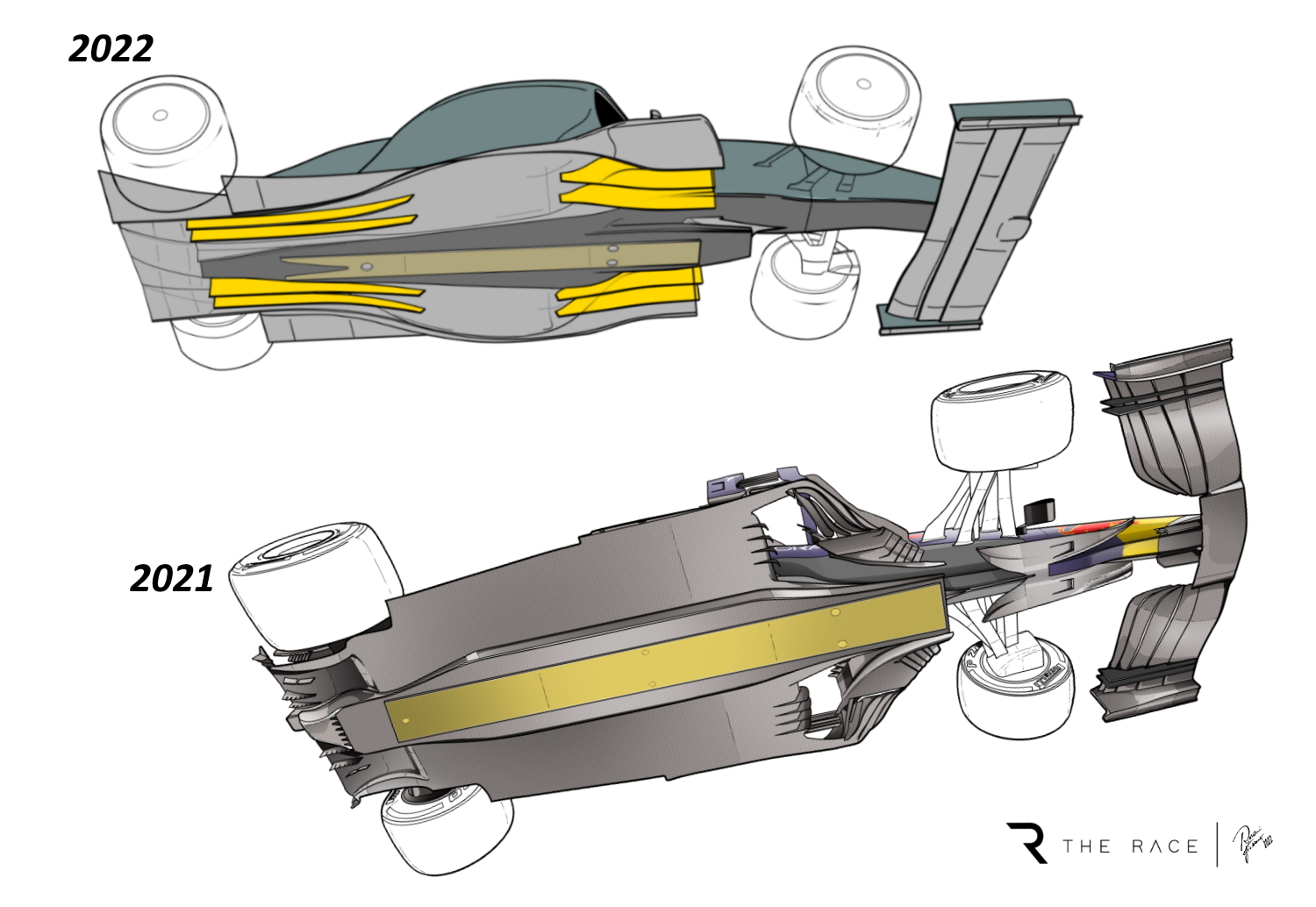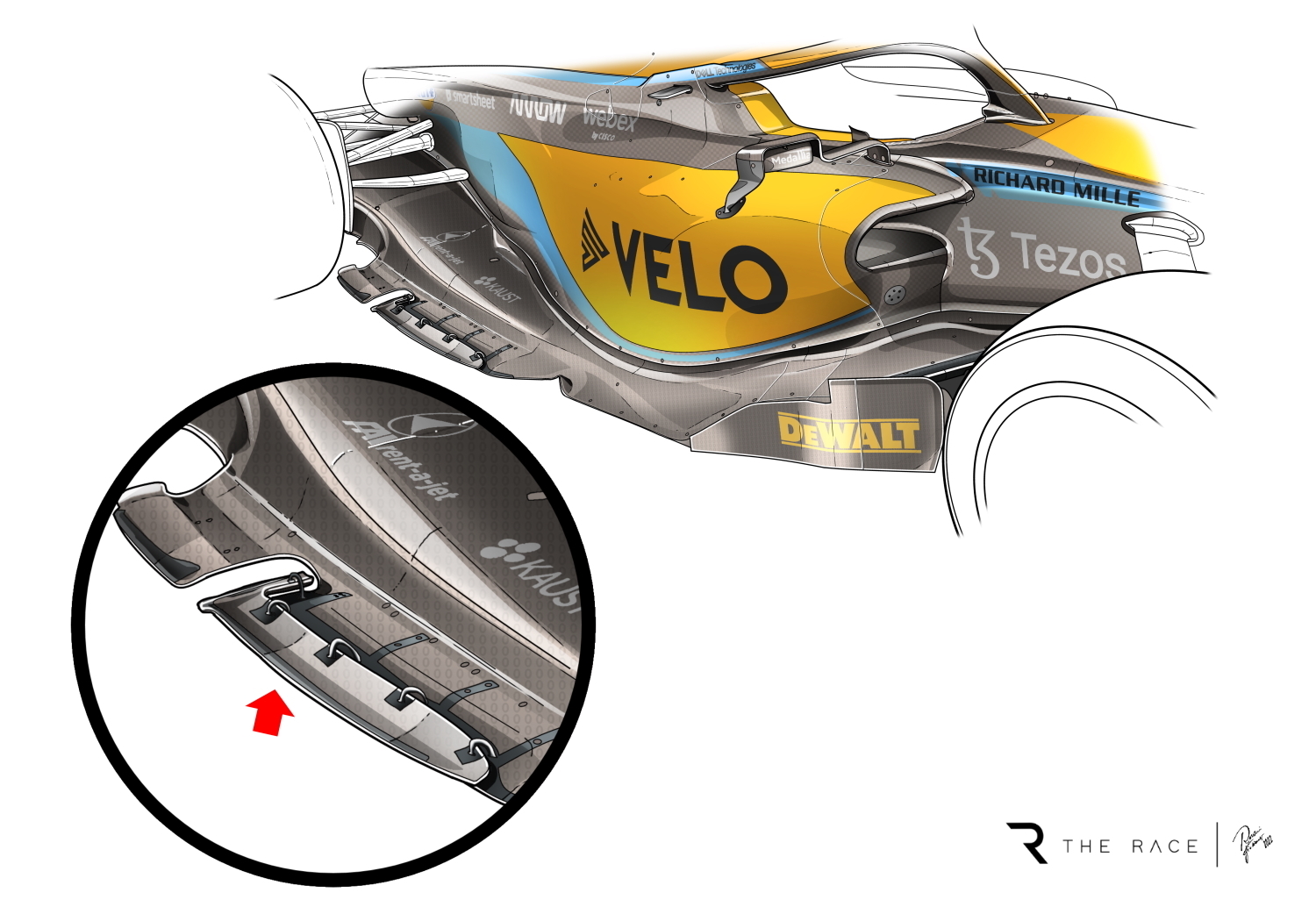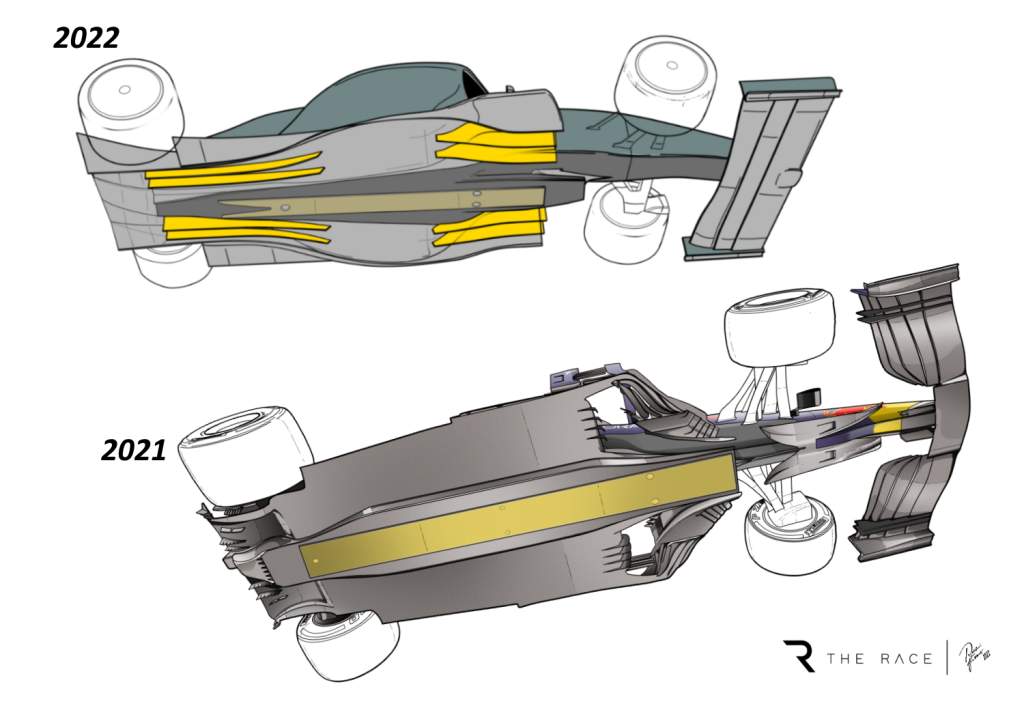Up Next

Despite fears that the regulatory constraints of Formula 1’s new 2022 rules would mean little variation, the different interpretations designers have found was one of the biggest technical talking points of the first test at Barcelona – and already seems like it will be in Bahrain too as the latest versions of the cars emerge.
But perhaps the even bigger topic at test one was the phenomenon of porpoising – also described as hopping or bouncing – and the success or otherwise of teams’ efforts to tackle it is sure to be a huge focus at the final test too, and probably beyond.
It’s an aerodynamic problem that affects cars that use venturi ducts to generate downforce through ground effect.
The hopping is due to a cycle of aerodynamic unloading and reloading of the car, due to the repeated stalling of the floor and the diffuser.
The expansion of the diffuser, now much wider than in 2021, fails to keep the airflow adhering to its wall beyond a certain speed (indicated on average to be above 155mph).
The flow then detaches from the upper edge of the diffuser, creating a stall. This slows down the flow under the venturi ducts and reduces the downforce of the car, which unloads the suspension.

Compared to 2021 cars, the floor is no longer stepped but has two large venturi ducts – clearly defined by the 2022 technical regulations. These have the task of creating a strong depression in the lower part by accelerating the airflow.
The porpoising, which would be problematic if it were to occur in fast corners, is something all the teams would have studied when the new regulations were released. But almost all of them have still suffered from this hopping to a greater or lesser extent.
Remedying it quickly will not be easy. McLaren appears to have the least problem with porpoising thanks to the design of the floor in the outermost edge. Perhaps this comes from the experience of its designers given the phenomenon or porpoising was present in F1 before venturi tunnels were banned for 1983.

The MCL36 seen at Barcelona had a different floor to the one revealed at the launch. In the area in front of the rear wheel, ie the point where the floor reaches the point closest to the ground in the lower part, there was a reduction in a portion of the surface, accompanied at the front by the ‘floor wing’ located in front of the slot.

McLaren is therefore using aerodynamics, and not just ground clearance, to prevent porpoising. The 2022 cars try to seal the flow that flows under the floor, by keeping the car running close to the ground. In fact, we have seen how much the rake angles have changed since last year.
McLaren has tried to reduce the sealing effect of the flow in the lower part, finding a compromise between loss of downforce and reduction of hopping.
Working on suspension stiffness and ground clearance is the focus that most of the teams will have to solve the porpoising problem ahead of testing in Bahrain.
Intervening at a regulatory level is an option that the FIA could consider, but only for future seasons.
The lower part of the floor is an area that we could almost define as ‘standard’ given how tight the wording of the regulations is. Changing and revising the current rules is something that will have to be evaluated later.
The engineers were shocked by the extent of this problem as it cannot be identified properly until the car is on track.
Having limited test running available doesn’t help the teams. CFD and windtunnel simulations do not allow for detailed simulation of this complex phenomenon, which not only concerns the airflow but also how the car behaves mechanically on the suspension.
The abolition of the inerter in the suspension has further accentuated porpoising, which would certainly have been more limited with the 2021-style suspension.





